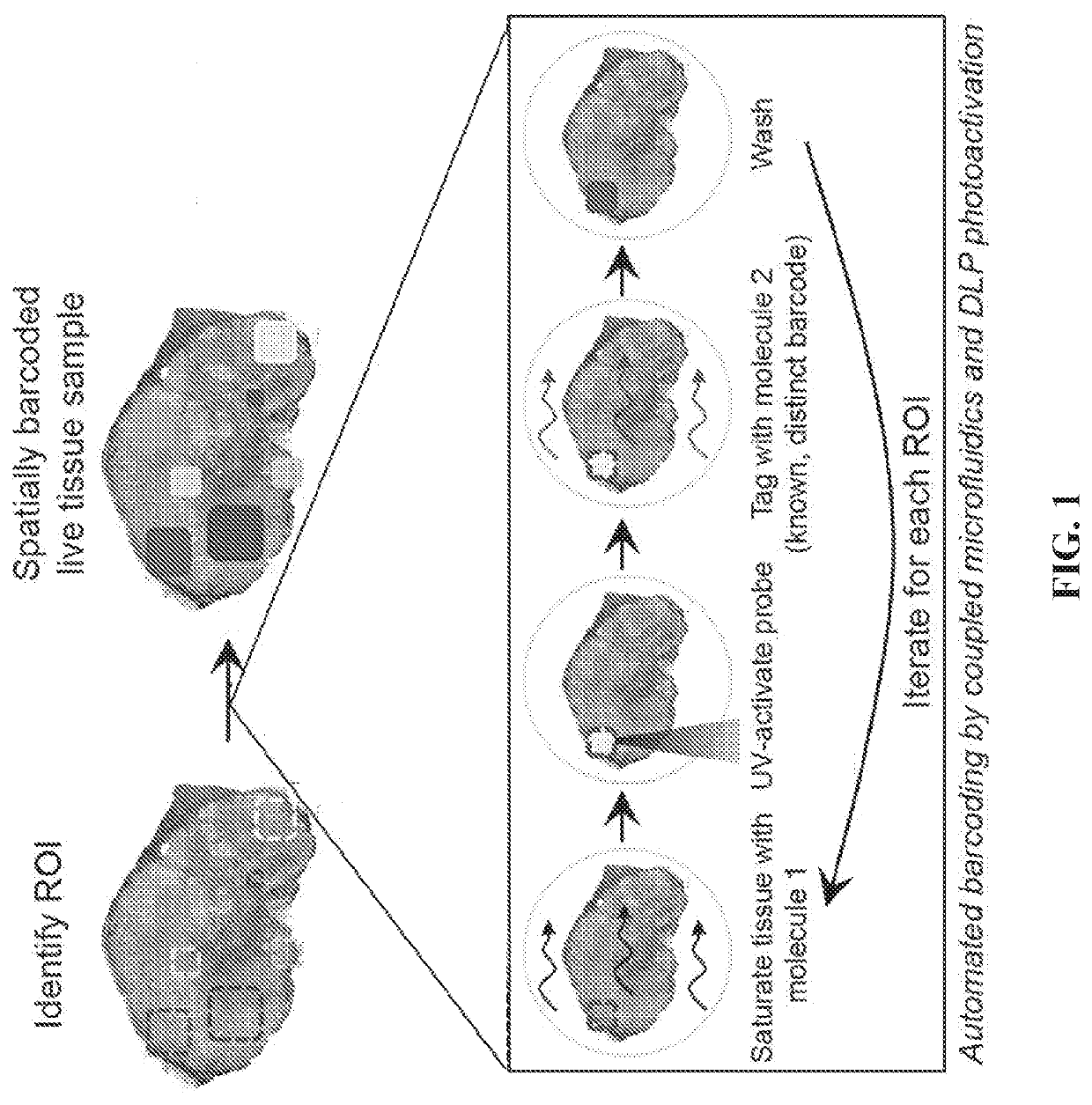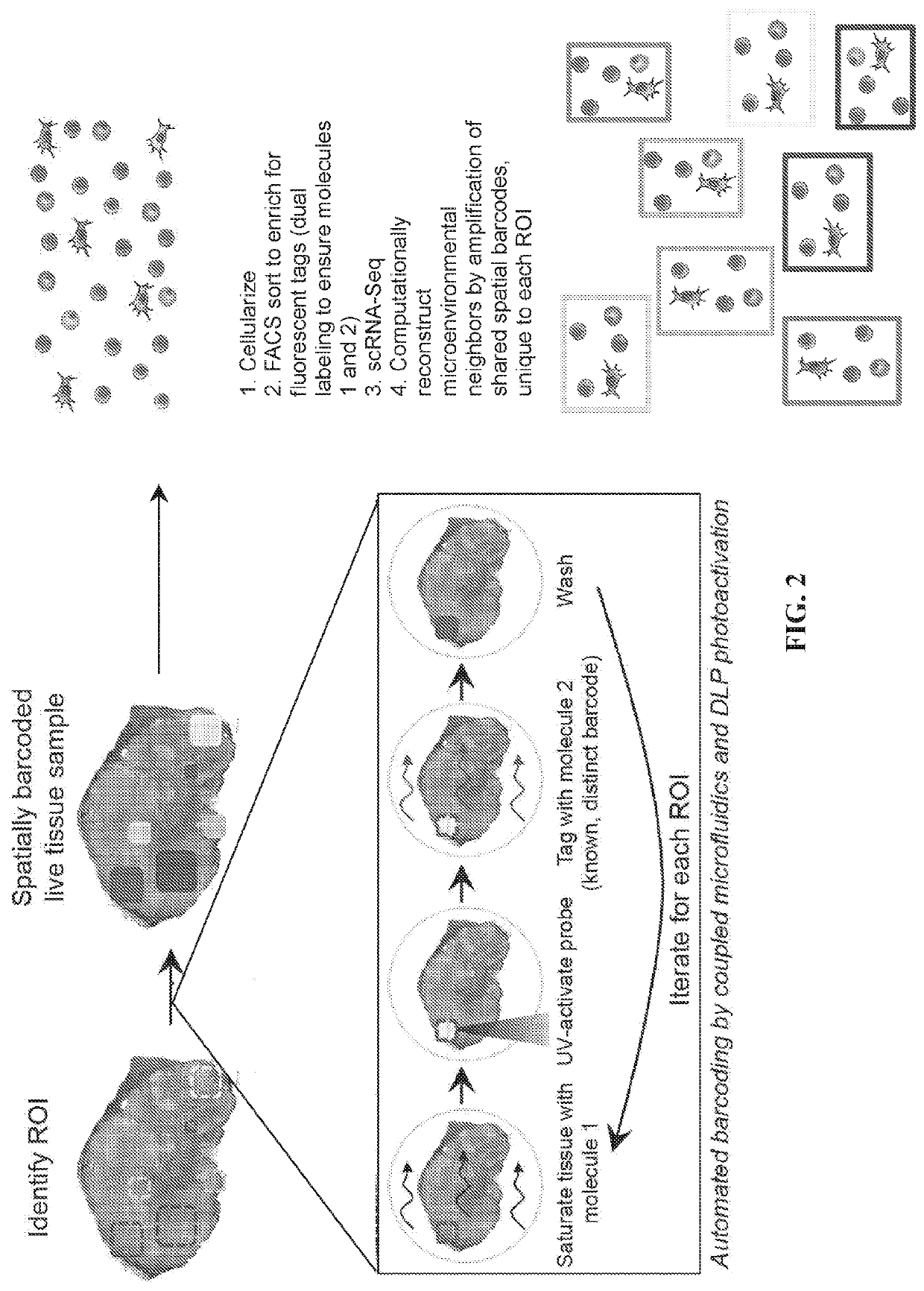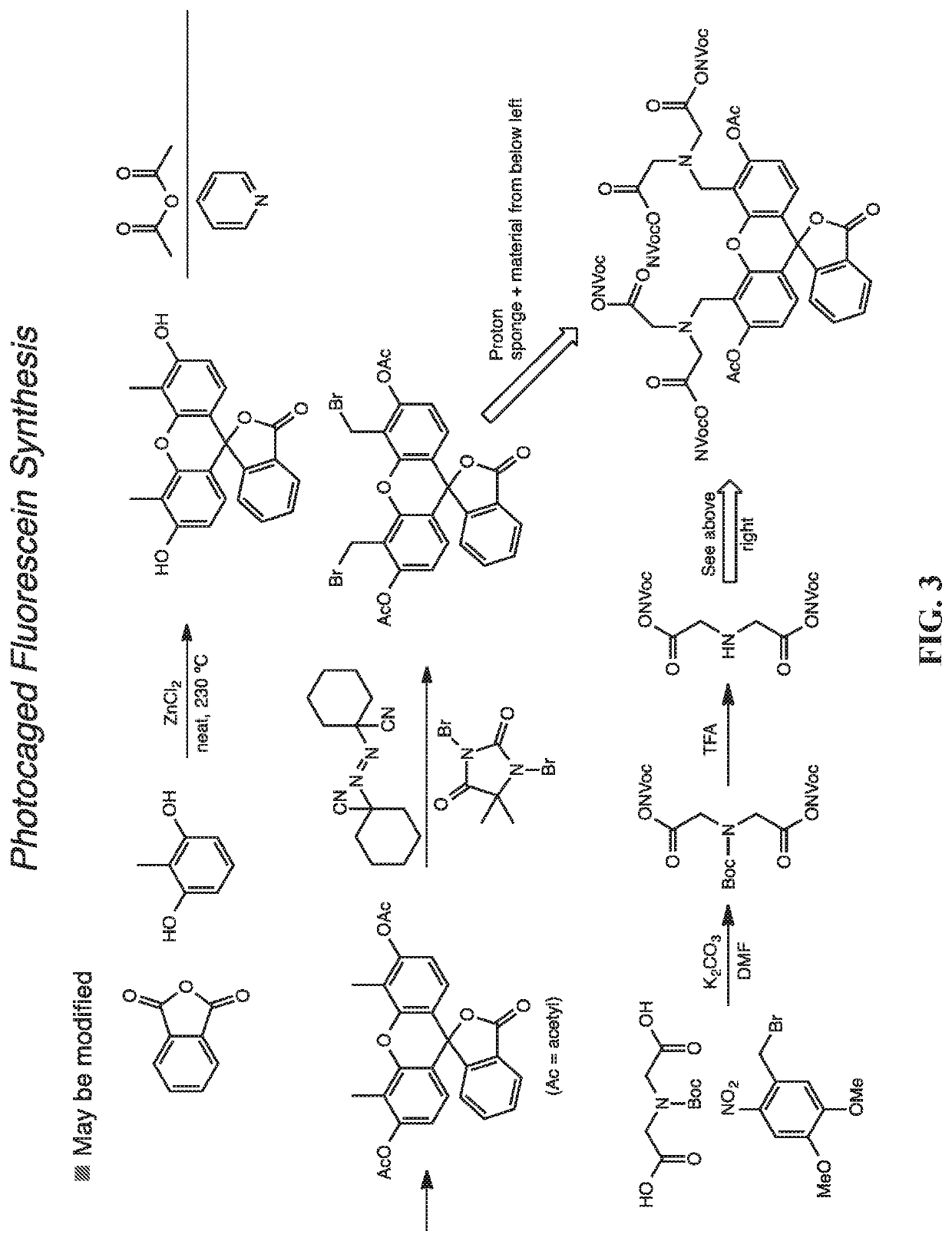Methods for identifying and modulating co-occurant cellular phenotypes
a co-occurring cellular phenotype and co-occurring gene technology, applied in the field of molecular profiling, can solve the problems of unknowable tumor cell immune-evasion mechanism representative repertoire, and not known whether individual tumor cell heterogeneity in the expression of immune-evasion molecules affects the effect of tumor cell heterogeneity
- Summary
- Abstract
- Description
- Claims
- Application Information
AI Technical Summary
Benefits of technology
Problems solved by technology
Method used
Image
Examples
examples
[0446]Using the cell functionalizing probe and cell functionalizing barcoded tag described herein with fine dissection tools, Applicants studied the regionality within the “macro-environment,” i.e., ˜104 cells. Applicants dissected a large (˜2.5 mm{circumflex over ( )}3) MC38 tumor from a mouse model into 3 isolates based on location: section 1 (peripheral margin, close to body), section 2 (core), and section 3 (intermediate zone radially, skin side). Applicants FACS sorted T cells, macrophages, and tumor cells and completed single-cell RNA-Sequencing. High resolution structural information was retained through tissue dissociation and subsequent single-cell RNA-Sequencing, as illustrated in FIG. 13B using a projection of the top principal components regional differences between each section.
[0447]Applicants further studied necropsy of non-human primate with single cell RNA-Sequencing of complete tissue composition across ˜10 tissues using the cell functionalizing probe and cell func...
PUM
| Property | Measurement | Unit |
|---|---|---|
| Molar Ratios | aaaaa | aaaaa |
| Molar Ratios | aaaaa | aaaaa |
| wavelength | aaaaa | aaaaa |
Abstract
Description
Claims
Application Information
 Login to View More
Login to View More - R&D
- Intellectual Property
- Life Sciences
- Materials
- Tech Scout
- Unparalleled Data Quality
- Higher Quality Content
- 60% Fewer Hallucinations
Browse by: Latest US Patents, China's latest patents, Technical Efficacy Thesaurus, Application Domain, Technology Topic, Popular Technical Reports.
© 2025 PatSnap. All rights reserved.Legal|Privacy policy|Modern Slavery Act Transparency Statement|Sitemap|About US| Contact US: help@patsnap.com



